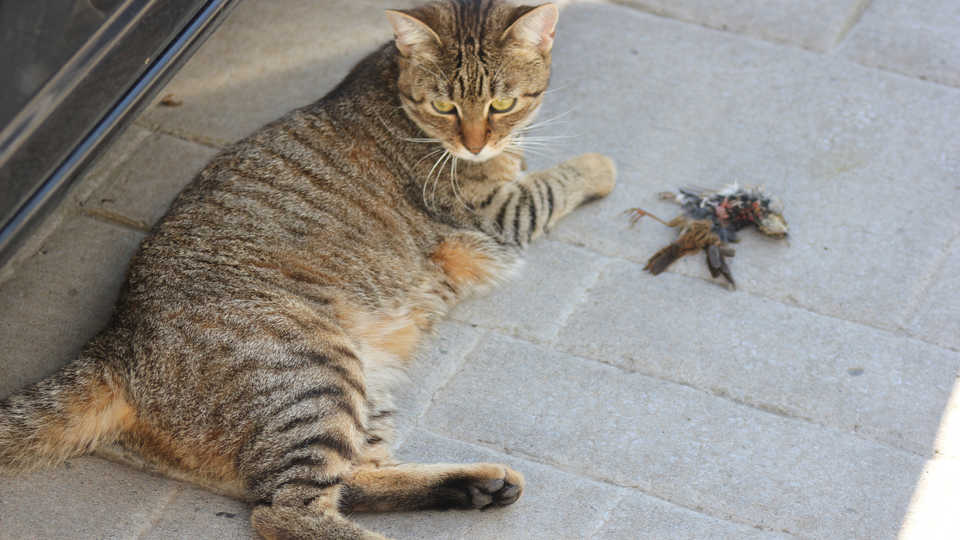Science News
The Cuddly Killer Among Us

The following facts are true about one species on this planet:
- They kill between one and four billion birds a year.
- They kill between six and 22 billion mammals a year.
- On several island ecosystems, this predator is the primary cause of bird, mammal and reptile extinctions.
- Worldwide, approximately 8% of critically endangered species are significantly threatened by this predator.
- It’s difficult to determine exact numbers but at least 20 million roam feral and 84 million are domesticated in the U.S. alone.
- The majority of their kills are for fun.
The species? Felis catus, the common cat. Happy National Cat Day!
A study in 2013 found that free-ranging cats are likely the single greatest source of mortality for U.S. birds and small mammals. A recent publication, by the same research team, found that cats are a larger threat to bird populations than wind turbines or window strikes combined.
Data-driven estimates of annual bird mortality in the U.S. break it down: billions of wildlife deaths are due to cat predation. Compared to hundreds of millions dead from building and automobile collisions, tens of millions from power line collisions, millions from power line electrocutions or communication tower collisions, and hundreds of thousands from wind turbine collisions, the cat reigns supreme as bird killer extraordinaire.
Humans domesticated cats around 9,000 years ago in the Middle East to assist with rodent control in grain storage and in homes. Unfortunately, humans did not think to control cat population growth—and cats have spread prolifically! Introducing non-native cats continues to have deadly consequences for native animal populations who are often ill-prepared to deal with the invasive predator.
The typical trap, neuter, and release programs for feral cat populations do little to help the bird and mammal populations. Fertile or not, these feral cats are able to continue their tooth and claw killing sprees. Trap and neuter does not adequately lower the cat population because cats breed quickly and have large litters; meanwhile, humans continue to abandon cats, introducing them into the wild to start new feral cat colonies. Euthanizing feral cats has proven effective but many municipalities have a tough time garnering public support: it might not be a purrfect solution, but it could be necessary to reduce feral cat populations.
For domesticated cats the solution is straightforward for most city dwellers—keep your cat indoors. Considering there are over 80 million domestic house cats, this simple action could protect around two billion local animals each year! According to research there is no adverse effect on the health of your indoor-only cat. In fact, indoor cats have a higher life expectancy and quality of life than outdoor cats. Outdoor cats are exposed to disease, parasites, road traffic, human cruelty, and predation from other animals. In fact, the Humane Society recommends keeping your furry friend indoors.
Natural selection shaped the housecat into the skillful predator we see today. Cats do not limit themselves to plentiful species, or the sick or injured: they will hunt whatever prey is in their vicinity. And more often than not, these animals are left mortally wounded but alive from the cat attack. Around 20% of the cat’s kills are brought home, 30% are eaten, and just under 50% are left mauled or dead at the site of the attack. It’s time to reconsider our penchant for the company of one animal at the expensive of billions of others. Does your cat beg to go outside? Consider training it to walk on a harness and leash—you’ll be the talk of the town!
Image: Brian Walsh/Flickr